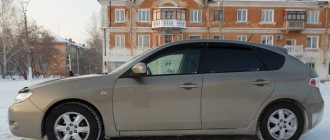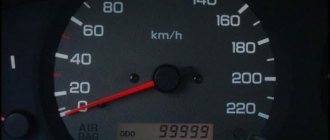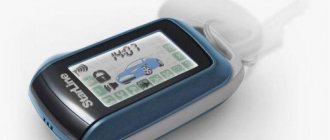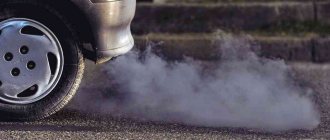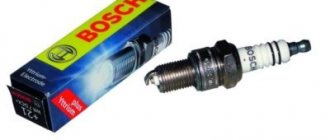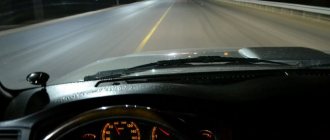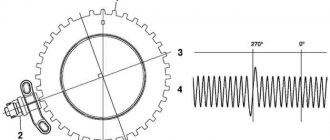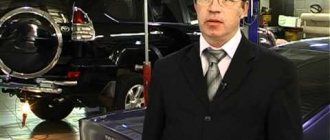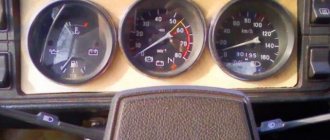Officially, a road traffic accident (RTA) is a traffic situation involving at least one car, which led to damage to property or harm to human health. There are several common causes of road accidents, depending on the main culprit.
We are talking about road accidents caused by drivers, poor road conditions, adverse weather conditions or poor technical condition of the vehicle (for example, faulty steering). Pedestrians and cyclists are often to blame for accidents.
Traffic violation
The most “popular” cause of road accidents is violation of traffic rules. The most common:
- Failure to comply with speed limits. Everywhere you can observe a situation where a car is rushing at a speed clearly exceeding 100 km/h, and the established limit is 60 km/h, which, given the condition of many roads, quite often ends in an accident. Our article is about determining speed in an accident.
- Failure to comply with, and often deliberately ignore, the rules for driving through intersections also happens often, despite the large number of tasks on this topic in exam papers for traffic rules.
- Driving into the oncoming lane and passing through a red light - you drive more quietly and then you will be talking about these violations.
- A sudden change in the trajectory of movement , which is often aggravated by the failure to use turn signals.
- Failure to maintain a distance not only increases the risk of not having time to brake, but also greatly irritates most motorists.
6) Public transport drivers
Over the past 10-15 years, minibus drivers have regularly been included in all collections of road accidents.
In pursuit of profit, drivers cut each other off, run red lights, and exceed the speed limit. Traffic congestion is caused by buses standing at stops in two right lanes at once.
Many minibus drivers are inexperienced drivers or deliberately ignore traffic regulations, sometimes reasonably believing that traffic police inspectors will not fine public transport so as not to create inconvenience for passengers.
Therefore, drivers who do not want to get into an accident should be more careful about passenger carriers.
Vehicle malfunctions
Statistically, there are relatively few road accidents due to technical malfunctions of vehicles , but their consequences are often quite serious. The greatest danger is posed by:
- violation of the tightness of the hydraulic, pneumatic or pneumatic-hydraulic brake drive;
- discrepancy between the efficiency of the braking system and state standards;
- exceeding the maximum permissible total steering play (for passenger cars, for example, no more than 10 degrees);
- the presence of movements of components and parts of the steering system that are not structurally provided for;
- malfunction of the power steering system;
- malfunction of external lighting devices;
- insufficient tire tread height for proper grip on the road surface;
- tire damage;
- violation of the tightness of the engine power supply system;
- malfunctions in the exhaust gas exhaust system.
Further actions
If you need the help of traffic police officers, you will have to wait for their arrival. Together with the inspector, an accident report is drawn up, and the traffic police officer records the testimony of all participants in the incident, and can also interview witnesses.
Drivers must receive copies of all documents drawn up from the inspector, since only if they are available can they count on compensation from the insurance company.
Traffic police officers perform different actions:
Often, car owners flee the scene of an accident, so the inspector’s duties include identifying signs of the car, after which the owner of the car is put on the wanted list.
Contempt
Disrespect on the road is a common phenomenon, drivers driving expensive cars look down on owners of cheaper models, and both ignore motorcyclists, cyclists and pedestrians. Frequent causes of accidents due to disrespect for road users:
- driving through intersections not according to the rules, but according to the principle “whose car is cooler is first”;
- recklessness;
- “Unnoticed” motorcyclists, cyclists and pedestrians.
Gadgets
Punishment
There is a fine for talking on the phone while driving. However, this does not stop drivers in their desire to communicate during the journey. Impunity plays an important role in this behavior of drivers. After all, in order to be punished for chatting on the phone, you must also be caught. And not every traffic police officer can spot a driver with a telephone receiver pressed to his shoulder in a stream of cars.
In addition, resourceful drivers are accustomed to hiding their phone the moment they spot a person in a light green vest within sight.
Phone and reaction
Meanwhile, when a person presses the phone to his ear with his shoulder, he deprives himself of the opportunity to quickly turn the steering wheel in case of danger. And he drives the car uncertainly and crookedly. For urgent calls, there are telephone headsets, wireless headphones or built-in hands-free systems. Their use is permitted.
Messengers
But not only telephone conversations can play a cruel joke on the driver. These days, the abundance of different instant messengers tempts the driver to type messages while driving. Some people driving even manage to take pictures or take pictures and publish these pictures on social networks.
It’s hardly worth talking at length about what can happen to a driver who looks at the smartphone screen instead of watching the road. It's like driving with your eyes closed.
Navigator
It’s not for nothing that navigators provide not only a visual demonstration of the route, but also voice prompts. Traffic police representatives ask drivers to listen to the navigator more, rather than look at it. After all, at the moment of contemplating the screen, the driver takes his eyes off the road, and this is dangerous.
Statistics
The statistics are disappointing. Among all drivers involved in road accidents, from 15 to 20% use various gadgets at the time of the collision.
Roads
Even more traffic accidents occur due to the poor condition of roads than due to technical malfunctions of the vehicles themselves. Common defects in road surfaces and traffic control systems that lead to emergency situations:
- Potholes, ruts, cracks in the road surface - if you hit a good pothole, you can easily find yourself in the oncoming lane without even wanting to.
- Open sewer wells, manholes that deviate from the level of the road surface by more than the maximum permissible 2 cm.
- Traffic lights malfunction.
Road accident concept
The abbreviation road accident is familiar to almost every person, even those who do not drive a car and do not have a license, but not everyone fully understands what it is. This concept is used to define accidents involving cars, motorcycles, pedestrians and public transport. The phenomenon is common, because every year many people die as a result of road accidents, hundreds become disabled. Main features:
- An event occurs during the movement of transport and occurs regardless of the will of a person.
- At least one vehicle, self-propelled vehicle or bicycle or motorcycle is involved.
- One of the parties or both suffered losses in the form of damage to health or breakdown of the car.
It is important to know! Deciphering an accident is simple and therefore many perform it on an intuitive level. An accident can happen on any part of the road, but most often it happens on sections with limited visibility or dangerous turns. The culprit bears the responsibility provided for by law. The punishment is determined by the court, which summons the driver based on the notice.
Types of accident
There are different types of road accidents based on the severity and nature of the incident. It occurs in the form of a collision, collision, or rollover. In the first case, it occurs with moving vehicles, pedestrians or cyclists. Even hitting a curb stone, which caused injuries to passengers or a passing pedestrian, is considered a traffic accident. Accidents are also classified according to severity:
- Resulting in the death of the culprit or victim, passengers.
- With bodily injury with short-term loss of health, complete loss of ability to work due to serious injuries.
- Causing material damage, with destruction of cargo or significant damage to it.
The material damage of an accident consists of the cost of repair work, as well as the costs of performing the functions of traffic police inspectors, providing medical care and losses from traffic stops. They are covered by MTPL or CASCO insurance, based on the issued policy or from the personal budget of the culprit. Main categories of accident participants:
- Driver. This could be a person who drives a car, drives a horse-drawn vehicle, or is a cattle driver, as well as an instructor who teaches driving.
- Passenger. This is a road user who is in a car or in a motorcycle sidecar or inside a bus during an accident.
- A pedestrian. A traffic participant who does not move on the roadway, who may be hit while crossing the highway in the wrong place or when a car drives onto the sidewalk.
It is important to know! Road accidents occur when road users interact with each other or with inanimate objects. Depending on all the circumstances of the event, the classification of the accident is determined.
Crossing the roadway in an unspecified place
Concentrating their attention on rights, many often forget about the responsibilities that pedestrians also have. People especially often forget about the prohibition of going out onto the roadway without first making sure that there is no danger to both themselves and other road users; it is also prohibited to suddenly go out onto the road because of an object that limits the visibility of vehicle drivers. Collisions with pedestrians crossing the roadway in an unspecified place at night are especially common, which is due to poor lighting of many streets, as well as due to the lack of reflective elements on pedestrians’ clothing, the wearing of which is strongly recommended by traffic rules.
Rules of conduct in case of an accident without loss of life
All drivers involved in an accident have the opportunity to resolve the situation without involving traffic police officers, but subject to the following conditions:
- The maximum amount of damage caused is 100 thousand rubles (from June 2022). For residents of Moscow, St. Petersburg and their regions, a maximum of 400 thousand rubles is established when an accident is recorded by a video recorder. (At the time of writing, you can find out more accurate data based on changes in legislation , use the search);
- There must be no more than 2 participants in the accident;
- There were no casualties, including pedestrians and passengers;
- Both vehicles involved in the accident are insured by MTPL.
In such a situation, if there is no disagreement regarding the accident, drivers must independently draw up a European protocol. To do this, you should carefully fill out the form, which is most often attached to the MTPL policy or is issued in person on the day the insurance contract is issued.
However, there is a small nuance here. If a vehicle with a trailer is involved in an accident, the simplified procedure using the European protocol is not carried out.
In addition, according to the rules of behavior in case of a car accident, you should take care of witnesses and evidence (just in case). Write down or photograph the license plates of cars passing nearby, as well as public transport. Subsequently, their drivers can be called to testify.
Record on camera the position of the car and any damage received before you remove the car from the roadway. The following must be visible in the photo: braking distance, license plates of both cars, location of fragments or damaged elements.
If you have any comments about what is described in the protocol, do not sign it. Or you have the right to indicate what you disagree with. Never sign your name on a blank form. Blank spaces in the document should be crossed out to avoid subsequent additions.
Learn more about cases of transport accidents and your actions >>>
Adverse weather conditions: fog, ice, rain, snowfall
Difficult weather conditions lead to a decrease in viewing range, changes in vehicle behavior, an increase in braking distance and many other undesirable effects that can lead to an emergency.
Fog Hazards:
- Reduced viewing range.
- Distortion of the perception of the real distance to an object.
- Distortion of the entire spectrum of colors except red.
- It should be remembered that in foggy conditions, high beams are completely useless.
In case of ice, relevant advice would be:
- It is advisable to start moving as smoothly as possible, without slipping.
- Braking should also be smooth, without disengaging the clutch; when switching to a lower gear, it is recommended to avoid sudden jumps in engine speed.
- It is advisable to switch gears quickly but smoothly.
Hazards of heavy rain:
- Reduced visibility.
- Damage to road signs.
- Erosion of the road surface itself.
- Rain-related contamination of headlights, turn signals and brake lights.
- Reduced wheel adhesion to the road surface.
- Hydroplaning is the separation of one or more wheels from the road surface due to the formation of a layer of water between the tread and the road surface, which leads to an almost complete loss of controllability.
Factors provoking road accidents during snowfalls:
- Reduced visibility range.
- Reduced wheel adhesion to the road surface.
- A soft shoulder hidden by a layer of snow means skidding and subsequent capsizing is possible.
- Road surface defects, rails and other obstacles hidden by snow.
- Icing of headlights, brake lights, turn signals and windshield.
- Difficulty in choosing a safe speed and distance from other road users.
Other causes of accidents
Road traffic accidents can also be caused by the driver’s inexperience, or by returning to driving after a long break - for example, a driver’s license was obtained in advance, 7-8 years, or even more, before purchasing your own car. A driver's license obtained for a bribe also does not add to road safety. An unexpected deterioration in health and emergency conditions that occur during a driver’s trip are also highly likely to result in an accident.
How to deal with an imminent collision
In order to ensure protection for yourself and your loved ones in case of accidents on road transport, you must follow the following recommendations:
On this topic ▼
How to act in the event of an accident and after it
- Control your emotions, do not let go of the steering wheel until the collision. In this case, you will be able to control the car until the end, and perhaps you will be able to correct the situation or at least avoid serious damage;
- Passengers should stay grouped and provide head protection;
- The muscles must be in a tense state, so they will take the full force of the blow, and not the bones;
- Resist moving your body forward in every possible way;
- The driver needs to use the back of the chair as a support, tense his muscles, and press into it. You need to put your hands forward and rest them on the steering wheel;
- The side position is the safest, so if you are not wearing a seat belt, it is recommended to lean on your side;
- Do not attempt to get out of the vehicle until it has completely stopped. The chances of survival increase 10 times if you are inside the cabin and do not jump out of it while moving;
- If the vehicle overturns or catches fire, you must leave the cabin immediately;
- If there is a child next to you, then cover him with yourself and take a side position together.
The most dangerous passenger position is the front seat. This is explained by the fact that if there is an impact, the doors may jam and you will have to leave the cabin through the windshield or window.
Statistics
In almost 85% of cases, the cause of road accidents is the driver’s violation of traffic rules, namely:
- 25% due to violation of the speed limit.
- 15% due to incorrect passage of intersections.
- 10% is taken by driving into the oncoming lane.
You can find out when you can drive after drinking alcohol from our article.
Driving vehicles while intoxicated accounts for 5.9% of road accidents:
- About 20% of road accidents occur due to the fault of pedestrians.
- The poor condition of roads and streets also leads to 20% of road accidents.
- The operation of technically faulty vehicles takes up less than 1%.
The amount exceeds 100% due to the fact that the cause of a traffic accident in many cases was a combination of several factors.
How to get out of a sinking car
In most cases, when a car falls into a body of water, the people in it begin to panic and take rash actions, which worsen their situation. They just don't quite understand what's happening to their vehicle at the moment.
What to do if your car sinks
The main actions in case of an accident on a vehicle when it is immersed in water are as follows:
- Unfasten your seat belt. Surprisingly, people often forget to do this in a panic, and desperate attempts to get out lead to its breakdown.
- Help your passengers with seat belts, starting by seniority.
- You should get out from the back of the car. Usually the car sinks by leaning forward due to the heavy engine.
- The car will remain afloat for some time after the fall. First of all, open the windows. By opening the doors, you will let a stream of water into the cabin and the flooding will accelerate.
- The headlights need to be turned on, so it will be easier to find your car later. In addition, the light from them will help you navigate in muddy water.
- If you can’t lower the windows, break them with any heavy object or feet.
- Heavy or metal objects in your pockets, as well as shoes, will interfere with your swimming. If possible, get rid of all unnecessary things and clothing.
- First, push the children out of the car. Explain to them that they need to push off against the roof of the car and swim quickly up.
- Once ashore, report the incident and call for medical help.
In such an extreme situation, a short action plan is suitable for memorization, which is as follows: “Belt, window, children, exit.” Remember that due to stress and adrenaline, you may not feel your injuries, so a doctor's examination is required.
Read the materials: How to help a drowning person
